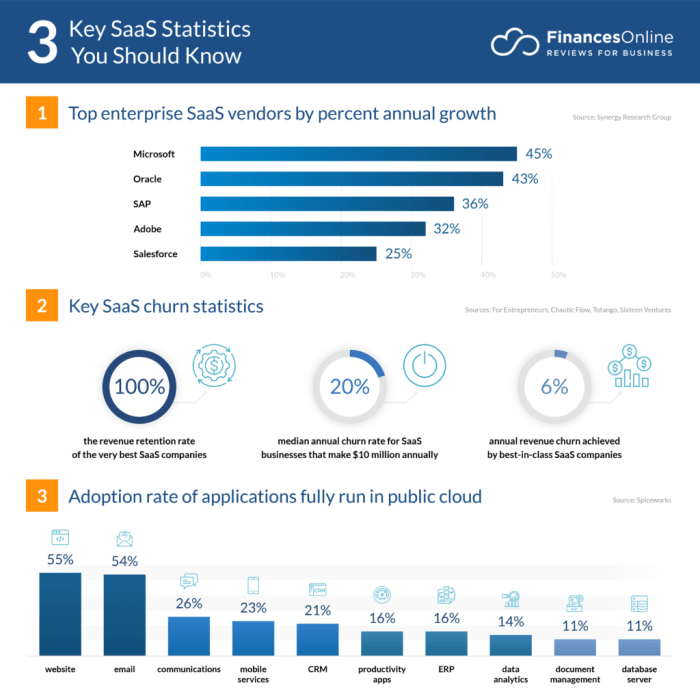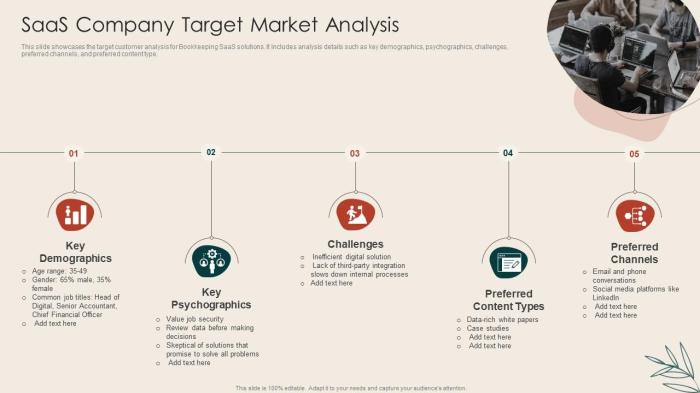Unveiling the SaaS Market Analysis: A Comprehensive Exploration
As SaaS market analysis takes center stage, this opening passage beckons readers into a world crafted with good knowledge, ensuring a reading experience that is both absorbing and distinctly original. Dive into the realm of SaaS market analysis as we unravel the complexities and trends defining this dynamic industry.
Overview of SaaS Market
In recent years, the Software as a Service (SaaS) market has experienced significant growth and has become a dominant force in the software industry. Let's delve into the brief history of the SaaS market, its growth trajectory, and the key players and trends shaping the industry.
Brief History of SaaS Market
The concept of SaaS can be traced back to the 1960s, but it gained popularity in the early 2000s with the emergence of companies like Salesforce, which pioneered the subscription-based software model. Since then, SaaS has evolved to offer a wide range of applications and services to businesses of all sizes.
Growth Trajectory of SaaS Companies
In recent years, SaaS companies have experienced exponential growth due to the shift towards cloud computing and the increasing demand for flexible and cost-effective software solutions. This growth is further fueled by the scalability, accessibility, and ease of implementation that SaaS offers to businesses.
Key Players and Trends in SaaS Market
Some of the key players in the SaaS market include Salesforce, Microsoft, Adobe, and Oracle, among others. These companies offer a diverse range of SaaS solutions catering to various industries and business needs. Trends shaping the SaaS market include the rise of artificial intelligence and machine learning integration, the focus on data security and compliance, and the increasing adoption of mobile-first applications to meet the needs of a remote workforce.
Market Segmentation
In the SaaS market, different segments cater to specific needs of businesses across various industries. Each segment targets a different audience and offers unique solutions to address their requirements.
Customer Relationship Management (CRM)
- CRM software focuses on managing customer interactions and relationships.
- Target Audience: Sales and marketing teams, customer support departments.
- Growth Rate: CRM segment has shown consistent growth due to the increasing importance of customer-centric strategies.
Enterprise Resource Planning (ERP)
- ERP software integrates core business processes such as finance, HR, inventory, and supply chain management.
- Target Audience: Finance, HR, and operations departments in large organizations.
- Growth Rate: ERP segment has seen steady growth as companies seek to streamline their operations and improve efficiency.
Collaboration Tools
- Collaboration tools facilitate teamwork and communication within organizations.
- Target Audience: Teams working remotely or across different locations.
- Growth Rate: Collaboration tools have experienced rapid growth with the rise of remote work and the need for seamless communication.
Competitive Landscape

In the competitive landscape of the SaaS market, companies are constantly vying for market share and striving to stay ahead of the competition. Major competitors in this space are constantly evolving and adapting to changing market conditions.
Major Competitors and Market Shares
- One of the major players in the SaaS market is Salesforce, with a significant market share in customer relationship management (CRM) software.
- Microsoft's Azure and Office 365 also hold a strong position in the SaaS market, particularly in cloud computing and productivity tools.
- Other notable competitors include Adobe, Oracle, and SAP, each offering a range of SaaS solutions targeting different industries and business needs.
Strategies Employed by Leading SaaS Companies
- Continuous Innovation: Leading SaaS companies invest heavily in research and development to bring new and improved products to market, staying ahead of competitors.
- Customer-Centric Approach: Focusing on customer needs and feedback helps SaaS companies tailor their solutions to meet specific requirements, enhancing customer satisfaction and loyalty.
- Strategic Partnerships: Collaborating with other technology companies or industry leaders can help SaaS companies expand their reach and offer bundled solutions to customers.
- Agile Development: Adopting agile methodologies allows SaaS companies to respond quickly to market changes and customer demands, ensuring they remain competitive in a fast-paced environment.
Market Trends
In the dynamic landscape of the SaaS market, several trends are shaping the industry, influencing the way companies develop and offer their software solutions.
Impact of Emerging Technologies
- The rise of artificial intelligence and machine learning is revolutionizing SaaS offerings, enabling more personalized and predictive solutions for users.
- Blockchain technology is enhancing data security and transparency in SaaS applications, gaining traction in the market.
- Internet of Things (IoT) integration in SaaS products is enabling real-time data monitoring and analysis, driving efficiency and performance.
Customer Preferences Driving Changes
- Customers are increasingly demanding seamless integration capabilities across multiple platforms, leading SaaS providers to focus on interoperability and compatibility.
- Subscription-based pricing models are gaining popularity among customers, as they offer flexibility and cost-effectiveness compared to traditional software licenses.
- Customization and scalability have become key factors for customers, as they seek tailored solutions that can grow with their business needs.
Global Market Analysis

The global SaaS market is witnessing significant growth and evolution, with businesses across various industries embracing cloud-based solutions to streamline operations and enhance efficiency. The market is projected to continue expanding rapidly in the coming years, driven by several key factors.
Overview of Global SaaS Market
The global SaaS market is characterized by a diverse landscape, with a wide range of offerings catering to different business needs and requirements. Major players in the market include industry giants such as Microsoft, Salesforce, and Adobe, along with a plethora of smaller niche providers.
The market is highly competitive, with vendors constantly innovating and improving their offerings to stay ahead of the curve.
Regional Differences in SaaS Adoption
When it comes to SaaS adoption, there are notable regional differences that influence market dynamics. Developed regions such as North America and Europe have been early adopters of SaaS solutions, thanks to their advanced IT infrastructure and tech-savvy businesses. In contrast, emerging markets in Asia-Pacific and Latin America are rapidly catching up, fueled by increasing digitization and the growing number of SMEs looking to leverage cloud-based technologies.
Factors Driving Global SaaS Growth
Several factors contribute to the growth of SaaS on a global scale. One of the primary drivers is the shift towards remote work and digital transformation, which has accelerated the adoption of cloud-based solutions across industries. Additionally, the scalability, flexibility, and cost-effectiveness of SaaS offerings make them an attractive choice for businesses looking to modernize their operations without heavy upfront investments in infrastructure.
Final Summary
In conclusion, the journey through the SaaS market analysis landscape reveals a tapestry of growth, competition, and innovation. Stay informed, stay ahead, and delve deeper into the realm of SaaS market analysis to navigate the evolving market with confidence.
Top FAQs
What are the key factors influencing SaaS market analysis?
The key factors include market trends, competitive landscape, global analysis, and evolving customer preferences.
How can businesses leverage SaaS market analysis for strategic growth?
Businesses can use market segmentation insights to target specific audiences effectively and stay competitive in the evolving landscape.
What role do emerging technologies play in shaping the SaaS market analysis?
Emerging technologies drive innovation and influence the development of new SaaS offerings, impacting market trends and customer preferences.